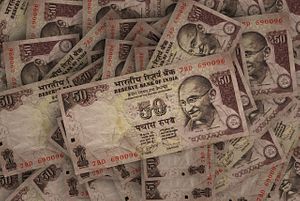India’s 2020–21 federal budget was presented on February 1 against the backdrop of six successive quarters of declining growth. Continuing frictions in the financial system have clogged the channels of monetary policy. This means that fiscal policy and structural reforms now have a critical role in stimulating the slowing economy and putting it back on a high growth trajectory. But the budget falls short of expectations in both areas.
The budget suggests that the causes of the slowdown are primarily external and that the slowdown is a cyclical event that has bottomed out with green shoots now emerging.
But International Monetary Fund Chief Economist Dr. Gita Gopinath stated that over 80 percent of the near-term worsening global economic outlook is because of India, contradicting the view that India is an innocent bystander.
The budget’s nominal GDP projection for 2020–21 is 10 percent, higher than the 7.5 percent estimated for 2019–20. There is no projection for real GDP growth. But since consumer price inflation is currently around 6 percent, the real GDP growth implicit in the budget may be no higher than the 4.8 percent estimated for 2019–20. Green shoots need to be sustained to show that this is not a dead cat bounce.
The aggregate budget numbers give little indication of fiscal stimulus. This could be either because the government believes that the economy has turned around, or because it feels that there is no fiscal space given the targets mandated by the Fiscal Responsibility and Budget Management (FRBM) Act. The fiscal deficit of 3.5 percent is marginally higher than the 3.4 percent that was budgeted in the previous year but significantly lower than the revised estimate of 3.8 percent.
In the absence of expenditure compression, the deficit may eventually exceed its projection (even if off-budget liabilities were excluded) due to overestimation of tax revenues, overly optimistic disinvestment projections, and its impact on the consolidated budget deficit.
The projections of 12 percent growth in tax revenues for 2020–21 appear unrealistic considering that the growth in the previous two years was just 8.5 percent (2018–19) and 4 percent (2019–20) due to a broken indirect tax system and sharp reduction in corporate tax rates.
The 2019–20 federal deficit was contained at 3.8 percent of GDP against the 3.4 percent budget projection. This was despite the 1.5 percent of GDP shortfall in tax revenue caused by a reduction of 0.9 percent of GDP in the states’ share of tax collections and an additional 0.3 percent of GDP windfall from the central bank. The consequential reduction in the central fiscal deficit is likely to be countervailed by an increase in state fiscal deficits.
The budget expects to realize the equivalent of 0.9 percent of GDP through the sale of public enterprise equity. This seems unlikely at a time of declining growth and animal spirits, and when the realizations during the last three years were just 0.6, 0.5, and 0.3 percent.
But the fiscal deficit itself is not a robust measure of stimulus. All other things being equal, lower growth increases the cyclical budget deficit even in the absence of expenditure growth due to a contraction in tax revenue. The structural deficit remains unchanged. If the FRBM Act distinguished between the cyclical and structural components of the budget deficit by factoring in revenue shocks, Indian budgets could have found the fiscal space to increase expenditure and still adhere to the mandated deficit targets.
In the absence of such accounting, Indian budgets tend to be procyclical, overestimating budget deficits during downturns and underestimating them when growth is above potential. The best measure of fiscal stimulus is expenditure growth. Overall expenditure growth is just 12.6 percent, marginally higher than nominal GDP growth but much lower than the 19.7 percent growth in 2019–20.
Still, the budget has a strategy for reviving growth even though it does not contain fiscal stimulus when seen in aggregate numbers. It seeks to revive growth by prioritizing investment over putting more income in the hands of middle-class and rural consumers. Following the earlier corporate tax cut, the budget offers further tax relief to investors — especially foreign investors. The restructured income tax rates and slabs offer little relief to middle-class consumers.
The outlays on agriculture and rural development are projected to grow by just 13.4 percent in 2020–21, compared to 34.8 percent in 2019–20. The outlays on IT, telecom, transport and urban development, used as a proxy for investment in physical infrastructure, are projected to grow by 28.9 percent in 2020–21, compared to just 8.7 percent in 2019–20.
The lack of urgency for new structural reforms in the budget is perhaps because the government views the current downturn as cyclical and temporary. There is little urgency to address the deep-seated frictions in financial markets, the indirect tax regime, the destruction of India’s informal economy, the sharp decline in household savings and the collapse of exports that have harmed India’s growth potential.
Structural problems require structural, not simply macroeconomic, solutions. It is not the role of the budget to fix such structural problems — some of which are not even economic — but it still could have moved in this direction.
Alok Sheel is the Reserve Bank of India Chair Professor in Macroeconomics at the Indian Council for Research on International Economic Relations (ICRIER). He was previously Secretary in the Indian Prime Minister’s Economic Advisory Council and Additional Chief Secretary to the Kerala Government in the Indian Administrative Services. This piece was originally published over at East Asia Forum here.

































